When it comes to fresh meat, no one can accuse Bowkett's Supermarket of a lack of choice. In fact, the Nisa store, situated in the ancient market town of Tenbury Wells, Worcestershire, is famed for its dizzying variety of meat products, most of which are prepared on site.
"In addition to cuts of meat, we offer sausages, pork pies, scotch eggs, quiches and burgers you name it, we sell it," explains store manager Glenys Holdcroft. "Bowkett's used to be a family butcher before becoming a Nisa store in the 1970s, but we've never lost our expertise in selling fresh meat." According to Glenys, Bowkett's has benefited from 102 years' butchery experience, passed down through generations of staff. In this time it has built up a healthy local reputation and established strong ties with suppliers.
Not all retailers, however, have quite the same fortunate story as Bowkett's. In the convenience sector, stores that offer a well-managed, profitable fresh meat section are the exception rather than the rule. So, just how easy is it for c-stores to sell fresh meat successfully?
Many argue that sourcing fresh meat locally is a great way for c-stores to differentiate their meat offer from the multiples. When a Tesco Metro opened down the road in 2007, trade at Derek Richie's Costcutter store in Ellon, Aberdeenshire, was hit hard. Yet, while other parts of the business have suffered, fresh meat sales have gone from strength to strength, and now account for 15% of his overall sales.
"Nearly all of the meat comes from my cousin's farm four miles away," Derek explains.
For any c-store wishing to source the best suppliers in their area, regional food groups such as Deliciously Yorkshire, Heart of England Fine Foods or Produced in Kent are ideal first ports of call. But be warned: locally-sourced meat often comes at a premium, and therefore isn't suitable for all stores.
Produced in Kent's business development manager Stephanie Durling comments: "Locally-produced food is labour intensive so the cost is higher. A store has to have the right customer demographic to sell locally-produced food people in less affluent areas, for instance, will not be prepared to pay the extra cost."
Durling's advice to those stores able to sell locally-produced meat is to make sure the provenance is communicated well.
"Retailers need to 'tell the story' to their customers. If retailers have a tie-up with a supplier where all meat is sourced within, say, a 15-mile radius, they should be boasting about it."
Spar Greystone in Coleraine, Londonderry, is one store that isn't shy in promoting its locally-sourced meat. According to supervisor Colin Hegarty, point-of-sale material sits proudly within the meat counters, telling customers exactly where the meat is from.
Fresh meat accounts for 7% of overall sales at the Spar store, which has been running long-term promotions on three different meats silverside beef, steak and chicken fillets.
"Promotions are a great way to demonstrate value to the customer, and when they are at the counter they will buy other products as well," he explains.
"Mark-up for the promoted meats is around 20%, while for the non-promoted cuts it's nearer 30%."
The counter sits at the back of the shop but Colin admits that, in a perfect world, it would be nearer the front. "Most refurbished c-stores you see these days have the fresh products staring at you as soon as you walk through the door. It makes sense as fresh produce gives the highest margins," he says.
How meat is displayed can also impact on sales. Butchery trainers at Plumpton College, Netherfield, East Sussex, suggest most customers make impulse purchases, so clever merchandising can go a long way.
"According to our butchers, most customers are attracted to the centre of a long display and to the right of short displays, so display the most profitable meat accordingly," says centre manager Sarah Blackford. "The use of colour is important and is best achieved with a garnish of vegetables and herbs rather than plastic grass."
Seasonality is another important aspect to consider with fresh meat, and c-stores are able to be much more flexible than the multiples in switching products to suit the weather.
"Make your display reflect seasonality and take advantage of changes in the weather," says Blackford.
"Large stores and supermarkets find this much more difficult to do. If fine weather is forecast, display a range suitable for barbecues in the run-up to a weekend."
Bowkett's Supermarket makes a big deal of its barbecue offer during summer months burgers, sausages and kebabs coated in different flavours sit in a separate chiller, and prove highly popular with customers.
Christmas, meanwhile, is an important time at the Ellon Costcutter store. Derek Richie claims the butchery staff have to work "day and night" in the last few days before Christmas, not only on preparing the turkeys but also all the accompaniments shoppers require, such as chipolatas, stuffing and gammon joints.
Selling fresh meat successfully may not be possible for all convenience stores, but given the right location, display space and expertise, it can prove to be a lucrative business for many. "Customers love nothing more than buying from a presentable, well-stocked meat display," says Glenys at Bowkett's Supermarket.
"And when it comes to quality, meat sold in a locally-supplied c-store is as fresh as it comes."
"In addition to cuts of meat, we offer sausages, pork pies, scotch eggs, quiches and burgers you name it, we sell it," explains store manager Glenys Holdcroft. "Bowkett's used to be a family butcher before becoming a Nisa store in the 1970s, but we've never lost our expertise in selling fresh meat." According to Glenys, Bowkett's has benefited from 102 years' butchery experience, passed down through generations of staff. In this time it has built up a healthy local reputation and established strong ties with suppliers.
Not all retailers, however, have quite the same fortunate story as Bowkett's. In the convenience sector, stores that offer a well-managed, profitable fresh meat section are the exception rather than the rule. So, just how easy is it for c-stores to sell fresh meat successfully?
Many argue that sourcing fresh meat locally is a great way for c-stores to differentiate their meat offer from the multiples. When a Tesco Metro opened down the road in 2007, trade at Derek Richie's Costcutter store in Ellon, Aberdeenshire, was hit hard. Yet, while other parts of the business have suffered, fresh meat sales have gone from strength to strength, and now account for 15% of his overall sales.
"Nearly all of the meat comes from my cousin's farm four miles away," Derek explains.
For any c-store wishing to source the best suppliers in their area, regional food groups such as Deliciously Yorkshire, Heart of England Fine Foods or Produced in Kent are ideal first ports of call. But be warned: locally-sourced meat often comes at a premium, and therefore isn't suitable for all stores.
Produced in Kent's business development manager Stephanie Durling comments: "Locally-produced food is labour intensive so the cost is higher. A store has to have the right customer demographic to sell locally-produced food people in less affluent areas, for instance, will not be prepared to pay the extra cost."
Durling's advice to those stores able to sell locally-produced meat is to make sure the provenance is communicated well.
"Retailers need to 'tell the story' to their customers. If retailers have a tie-up with a supplier where all meat is sourced within, say, a 15-mile radius, they should be boasting about it."
Spar Greystone in Coleraine, Londonderry, is one store that isn't shy in promoting its locally-sourced meat. According to supervisor Colin Hegarty, point-of-sale material sits proudly within the meat counters, telling customers exactly where the meat is from.
Fresh meat accounts for 7% of overall sales at the Spar store, which has been running long-term promotions on three different meats silverside beef, steak and chicken fillets.
Tips from the fresh meat experts
Avoid over-stocking chiller cabinets or serve-over counters. According to Colin Hegarty, store supervisor at Spar Greystone in Coleraine, packing meat too tightly can cause leakages. "Be careful to use the right size tray for the meat," says Hegarty. "In the event of a leak, clear it up right away. Any customer who sees a spillage will be left with a bad impression, so deal with it immediately."
Stockists say all fresh meat should be stored between 2-40C, and temperature checks should be carried out throughout the day. Bowkett's Supermarket manager Glenys Holdcroft believes it's important to make sure meat stocks are in the correct places in the chiller cabinets. "Customers often pick things up and put them down wherever they like, which can make a mess of cabinets."
"It's also important to get the right labels on products," adds Glenys. "That's where staff knowledge comes in everyone behind the counter should be able to indentify the cut of meat, and even suggest the best methods to cook and eat it."
Colin says long-term promotions help keep customers interested in the meat section.Avoid over-stocking chiller cabinets or serve-over counters. According to Colin Hegarty, store supervisor at Spar Greystone in Coleraine, packing meat too tightly can cause leakages. "Be careful to use the right size tray for the meat," says Hegarty. "In the event of a leak, clear it up right away. Any customer who sees a spillage will be left with a bad impression, so deal with it immediately."
Stockists say all fresh meat should be stored between 2-40C, and temperature checks should be carried out throughout the day. Bowkett's Supermarket manager Glenys Holdcroft believes it's important to make sure meat stocks are in the correct places in the chiller cabinets. "Customers often pick things up and put them down wherever they like, which can make a mess of cabinets."
"It's also important to get the right labels on products," adds Glenys. "That's where staff knowledge comes in everyone behind the counter should be able to indentify the cut of meat, and even suggest the best methods to cook and eat it."
"Promotions are a great way to demonstrate value to the customer, and when they are at the counter they will buy other products as well," he explains.
"Mark-up for the promoted meats is around 20%, while for the non-promoted cuts it's nearer 30%."
The counter sits at the back of the shop but Colin admits that, in a perfect world, it would be nearer the front. "Most refurbished c-stores you see these days have the fresh products staring at you as soon as you walk through the door. It makes sense as fresh produce gives the highest margins," he says.
How meat is displayed can also impact on sales. Butchery trainers at Plumpton College, Netherfield, East Sussex, suggest most customers make impulse purchases, so clever merchandising can go a long way.
"According to our butchers, most customers are attracted to the centre of a long display and to the right of short displays, so display the most profitable meat accordingly," says centre manager Sarah Blackford. "The use of colour is important and is best achieved with a garnish of vegetables and herbs rather than plastic grass."
Seasonality is another important aspect to consider with fresh meat, and c-stores are able to be much more flexible than the multiples in switching products to suit the weather.
"Make your display reflect seasonality and take advantage of changes in the weather," says Blackford.
"Large stores and supermarkets find this much more difficult to do. If fine weather is forecast, display a range suitable for barbecues in the run-up to a weekend."
Bowkett's Supermarket makes a big deal of its barbecue offer during summer months burgers, sausages and kebabs coated in different flavours sit in a separate chiller, and prove highly popular with customers.
Christmas, meanwhile, is an important time at the Ellon Costcutter store. Derek Richie claims the butchery staff have to work "day and night" in the last few days before Christmas, not only on preparing the turkeys but also all the accompaniments shoppers require, such as chipolatas, stuffing and gammon joints.
Selling fresh meat successfully may not be possible for all convenience stores, but given the right location, display space and expertise, it can prove to be a lucrative business for many. "Customers love nothing more than buying from a presentable, well-stocked meat display," says Glenys at Bowkett's Supermarket.
"And when it comes to quality, meat sold in a locally-supplied c-store is as fresh as it comes."






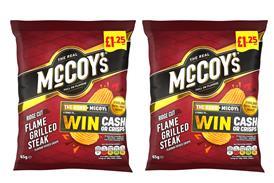
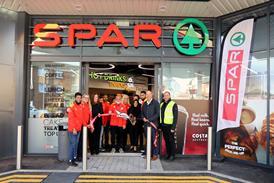








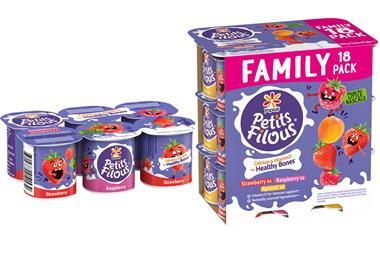


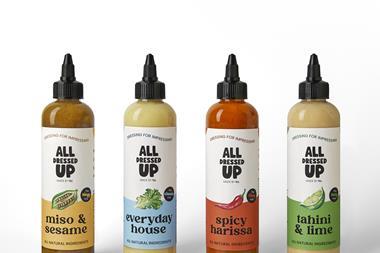
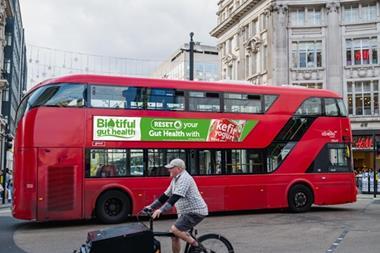




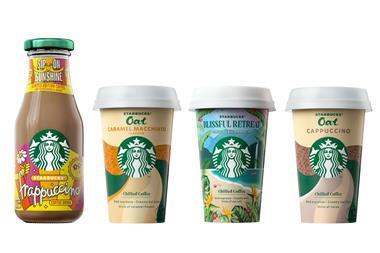

No comments yet